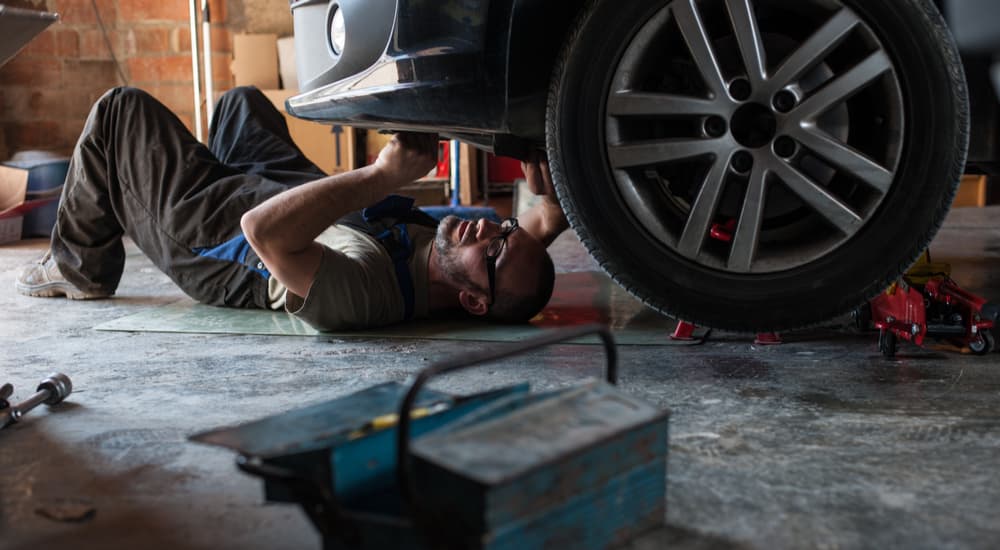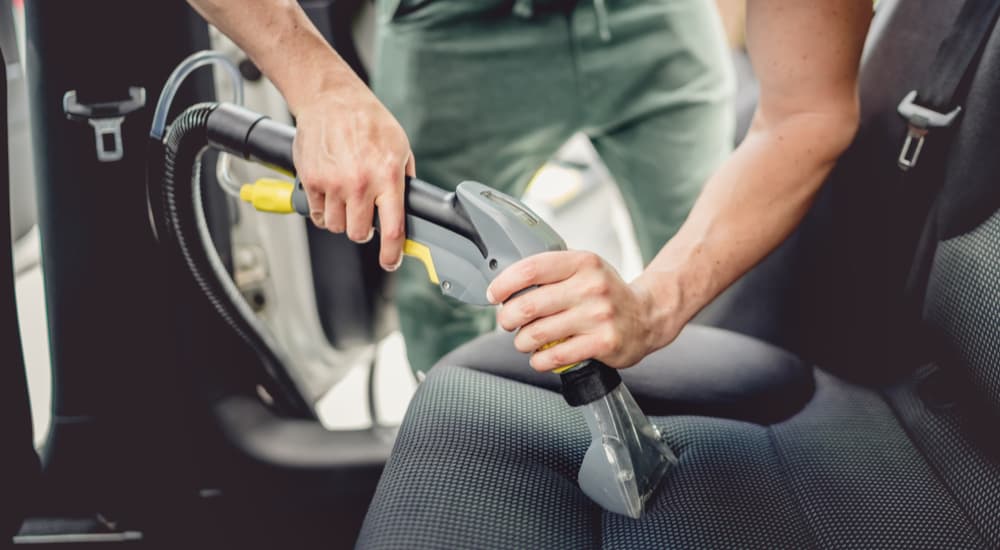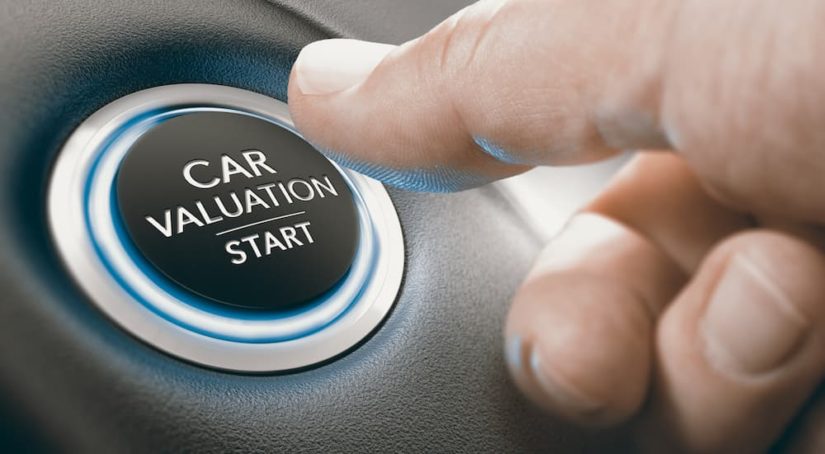What is trade-in value, how is it calculated, and how do I value my trade? These are all questions that probably start running through your mind when you begin to think it’s time to cash in your old vehicle and get something new. Simply put, trade-in value is how much you can expect to see from the sale of your vehicle to a dealership. This trade-in value is often lower than its resale value, which is what a vehicle might fetch on the open market through a private sale.
Dealerships tend to offer a little less so that they can profit from the sale down the line, but the trade-in route can be a handy alternative for drivers looking to finance the purchase of their next vehicle through the sale of a used model. You might be leaving some money on the table when it comes to trading in at a dealership, but for many drivers, the lower valuation is worth the convenience of not having to navigate the world of private vehicle sales. There are often also some financial benefits involved in selling to a dealership, including a valuable tax break, which makes dealership trade-ins a particularly alluring option for drivers.
However, just because you might get a little less than you want doesn’t mean you should settle for a lowball offer from a dealership. There are a few simple tricks that can go a long way in maximizing the value of your trade-in. From doing your homework ahead of time to cleaning, comparing quotes, and choosing the right time to sell, these tips will help to make sure you get the highest possible value for your trade-in. Note that while many of these guidelines also apply to private sales, this information is specifically geared toward those looking to trade in their vehicle at a dealership.
Start With Some Research
Websites like Kelley Blue Book, Cars.com, and Edmunds can be great resources when it comes to pricing your vehicle. These sites can give drivers a ballpark figure of their vehicle’s fair market value based on a number of factors, including the vehicle’s age and condition as well as current market trends and demand. You shouldn’t look at the numbers these sites give you and assume that’s what a dealer will offer (you will be disappointed if you do), but they can help you know roughly what price you might be able to expect.
Kelley Blue Book, one of the industry’s most popular vehicle valuation tools, begins the process by having users input their vehicle identification number (VIN) or fill out specific information on the make, model, trim, color, and mileage. From there, you can either fill in details about specific equipment and styling options or choose to see an estimate based on the model’s standard equipment. The next step is one of the most important, asking users to rank their vehicle’s condition as either Fair, Good, Very Good, or Excellent. While it’s tempting to overstate a vehicle’s condition, it’ll only lead to disappointment, so be realistic. The fact is that no matter how pristine your beloved vehicle might look in your own eyes, very few (as low as two percent) qualify as being in Excellent condition. A vast majority fall into the Good (50 percent) or Very Good (28 percent) categories.
The formulas these sites use are only as good as the information they’re being fed, so it’s important to be honest with yourself when it comes to describing the vehicle’s condition. Fill out the form truthfully, follow the tips mentioned above, and you’ll be well-prepared to recognize any lowball offers when you see them. The website will sort through recent transactions and sales data relevant to your geographic area before spitting out a trade-in range, as well as what the vehicle might garner in a private sale. Kelley Blue Book has also added two new options that allow users to donate their vehicle to Charitable Adult Rides and Services (CARS) or receive an instant cash offer that can be redeemed at a local dealership.

Carefully Consider Any Repairs
Making sure your vehicle is in good working order is a logical first step when it comes to kicking off the trade-in process, but there are some exceptions. A little time spent fixing minor mechanical and cosmetic damage like burnt-out or cloudy headlights can pay dividends when it comes to getting the maximum value for your vehicle, but don’t go overboard. If a vehicle suffers from extensive mechanical issues, it’s often not worth investing in repairs before it’s time to trade in, as these expensive fixes will likely decimate your profit margin.
For example, if you’re dealing with the dreaded Check Engine light and have reason to suspect a spark plug-related issue, go ahead and replace the affected components at the relatively affordable price of $5 to $20 a pop. However, if that doesn’t solve the problem or you’re dealing with an issue that falls outside of your DIY comfort zone, don’t throw good money away on a vehicle that you’ll soon be parting with. The same can be said of body damage which, while not as important to the vehicle’s ability to function, can be very expensive to repair. Yes, you’ll get a significantly lower offer for a vehicle with obvious body damage, but a dealership can typically fix the issue much cheaper than you’ll be able to, so it’s usually best not to make the investment.
Also, make an effort to keep track of your vehicle’s repair and maintenance-related receipts. These can be worth their weight in gold when it comes to improving trade-in value, proving that a vehicle has been well-cared for throughout its life, not just in the days and weeks leading up to the sale.
Compare Offers
Soliciting offers from a range of dealerships might involve a little leg work, but it can make all the difference when it comes to maximizing your trade-in value. In many cases, a driver already knows where they want to buy their next vehicle, but that particular dealership should actually be your last stop in the trade-in journey. Begin the process using web-based dealerships like Carvana and CarMax, which will give you a good ballpark figure for your vehicle’s value. While such sites are a good starting point, they often don’t do a great job of taking into account factors like the current market conditions and inventory in your area, so the next step is visiting some local dealerships. These dealers have a better idea of what vehicles are selling for in a particular region, leading to more accurate trade-in offers. Lastly, visit the dealership that you want to buy your next vehicle from and use everything you’ve learned to drive up your trade-in value. Coming to the exchange with offers from other dealerships will increase your bargaining power and result in a very different offer than you might have received had you made the dealership your first stop.
Separate Purchase From Trade-In
It can be tempting to trade your trade-in and new vehicle purchase as one big transaction, but you could end up robbing yourself in the process. While there are some advantages to getting the whole process over in one go (namely time and the fact that in many states, the value of the trade-in can be deducted from the sales tax on a new vehicle), it can also lead to some hijinks from some of the less reputable dealerships out there. Dealers might try to lowball you, thinking you’re more focused on buying a new vehicle than getting the maximum value for your trade-in.
It’s also easier to get distracted with so many numbers flying around, allowing dealers the opportunity to capitalize on this confusion. They might offer you a seemingly generous trade-in offer, but then go and tack those “savings” onto the price of the vehicle you’re purchasing. By dealing with the trade-in and purchase as two separate transactions, it’s easier to increase transparency and ensure you’re getting the best possible deal. However, if you are working with a reputable dealer, they should be able to clearly show you all the prices for everything in a clear and easy-to-understand way, so you can feel comfortable doing everything as a single transaction.

Clean Up
Logical or not, curb appeal is a huge factor when it comes to making any sale. Sure, it’s essentially the same vehicle under all those layers of dust, pollen, or road salt, but looks matter when you’re trying to get the most for your trade-in. Give the vehicle a good cleaning inside and out, focusing on areas that will be of the most interest to a potential buyer. A little elbow grease can go a long way in bringing new life to your windows, upholstery, tires, and more, making this one of the easiest ways to improve trade-in value.
There are some cheap ways to take years off your vehicle’s appearance, such as polishing cloudy headlight covers with a simple mix of toothpaste and water. Of course, the same rules we mentioned when it comes to repairs extended to the cleaning side of the equation. Make an effort, but don’t start cutting into your profits with over-the-top detailing jobs and the like. Such an investment might make sense if you’re selling a classic car or particularly high-end vehicle, but it makes a lot less sense when you’re talking about that rusty sedan you’ve been driving since college.
Time It Out
As we touched on earlier, there are plenty of factors that can affect a vehicle’s trade-in value that have little to do with the vehicle itself. Prices can vary widely based on the current number of vehicles the dealership has in stock, the time of year, the demographics of the area, and even larger factors like the current economic climate. Weather can be a particularly pivotal factor, with vehicles like all-wheel drive trucks and SUVs bringing higher prices going into the winter months while sporty roadsters and convertible vehicles do better in the warmer months.
Buyers tend to flock to dealerships around the holidays, trying to take advantage of end-of-the-year sales, but trade-in values actually flourish in the first two quarters of the year and trend lower during the latter half of the year. This is due to a number of factors, including higher demand and the fact that a vehicle like a 2015 RAV4 is going to seem just a little newer in March of 2022 than it will as it edges up against January of 2023. The vehicle might be functionally identical, but the older the vehicle’s perceived age, the lower the value you can expect from the trade-in.
A Few Easy Steps to Increase Your Trade-In Value
If you want to make sure you walk away with the best possible trade-in deal, there are some easy steps to follow. First and foremost, make sure you do your research. Knowledge is power when it comes to navigating the high-pressure world of automotive sales, and the more information you walk into the dealership with, the happier you’ll be when you leave. This includes knowing the potential value of your vehicle and when the best time to bring it to trade is. Put a little time into getting your car ready for sale because you might be surprised how much a little quality time with a squeegee and an oil change can net you when it comes to getting a fair price for your vehicle. These simple and easy pre-trade-in steps can really make the trade-in process easier and more profitable for you.



